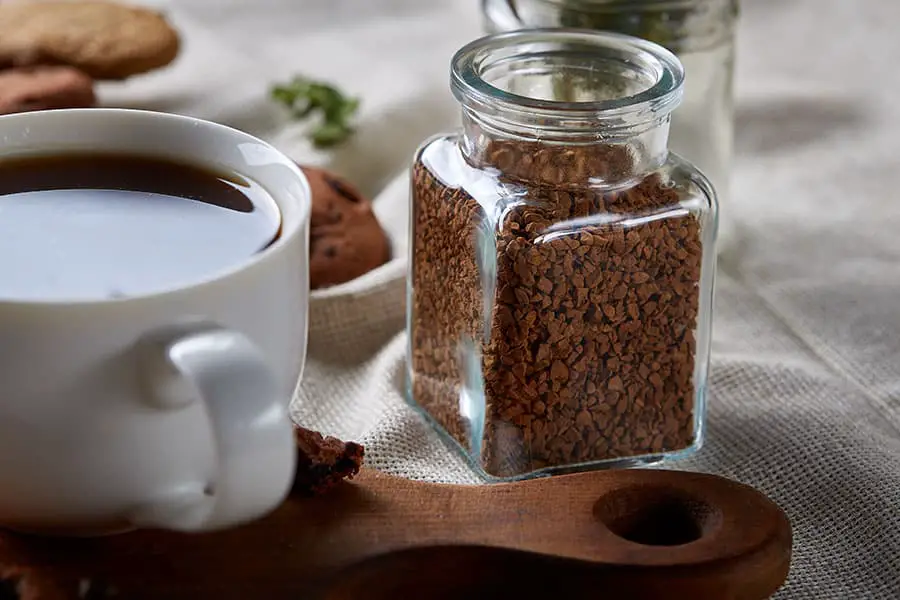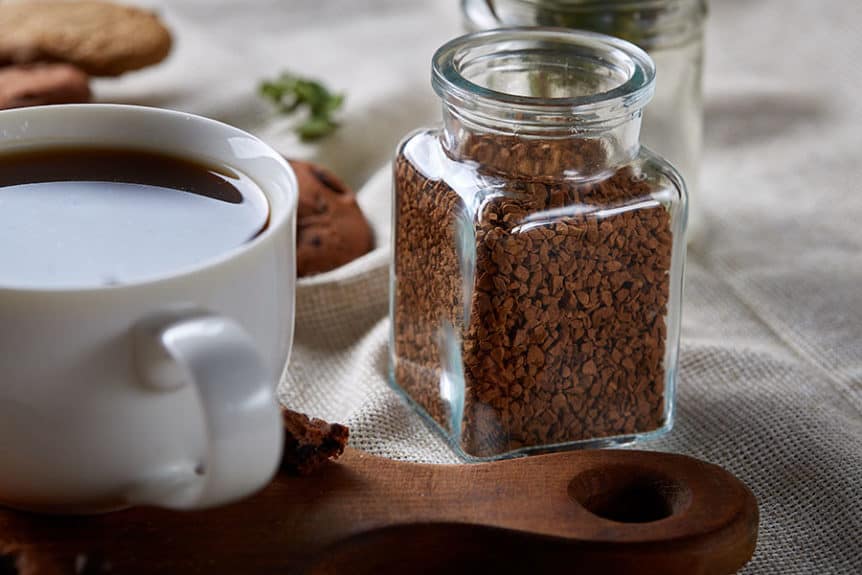
Instant coffee gets you a quick caffeine hit without much fuss. You dissolve granules in hot water, and that’s it. But small changes in your approach can turn a flat cup into something you look forward to. In this post, I’ll walk you through the process, share tips from around the web, and suggest ways to mix it up. We’ll cover the basics, tools, and tweaks to make your brew stand out.
Start with the Right Instant Coffee
Pick instant coffee that fits your taste. Some brands use spray-drying, where brewed coffee gets sprayed into hot air to form granules. Others freeze-dry it for a milder flavor. Look for arabica-based options if you want less bitterness. Robusta types pack more punch but can taste harsh.
Stores carry plain versions or flavored ones like vanilla or hazelnut. If you roast your own beans, you can even make instant coffee at home by grinding them extra fine, straining, and storing the granules. This gives you control over freshness, though it takes effort.
Gather Your Tools
You need minimal gear. A kettle heats the water. Use an electric one for steady temperatures or a stovetop model. A mug holds the brew—ceramic keeps heat in better than glass. A spoon stirs things up. For precision, grab a kitchen scale, but a teaspoon works fine.
If you experiment, add a milk frother for creamy textures or a thermometer to check water heat. No need for fancy machines here.
The Basic Brewing Method
Follow these steps for a standard cup.
- Boil fresh water. Draw it from the tap and let it run for a few seconds to get oxygen in there—it helps the flavor pop.
- Measure your coffee. Use about 2 grams, or one heaped teaspoon, per 200ml of water. Adjust if you like it stronger or weaker.
- Preheat your mug. Pour a bit of hot water in, swirl it, then dump it out. This stops the cup from cooling your brew too fast.
- Add the granules to the mug.
- Pour the water. Wait 30 seconds to a minute after boiling so it’s around 90-95°C (194-203°F). Hotter water can make it bitter.
- Stir until dissolved. Give it 10-15 seconds.
- Add milk, sugar, or cream if you want. Whole milk mixed with a splash of cream makes it smooth.
This method takes under five minutes and delivers a reliable cup.
Water Matters More Than You Think
Water quality affects the taste. Hard water with minerals can dull flavors, while soft water lets them shine. Use filtered water if your tap tastes off.
Temperature is key. Boiling water at 100°C extracts too much acidity. Let it cool to 90-95°C for balance. If you lack a thermometer, count to 30 after the kettle clicks off.
Here’s a quick guide to water temperatures and their effects:
| Temperature Range | Effect on Taste | When to Use |
|---|---|---|
| 85-90°C (185-194°F) | Mild, smooth | For lighter roasts or if you add milk |
| 90-95°C (194-203°F) | Balanced, full-bodied | Standard brews |
| 95-100°C (203-212°F) | Strong, bitter | Avoid unless you like intense flavors |
This table shows how a few degrees shift the outcome. Test it yourself.
Ratios for Your Preference
Stick to 1-2 teaspoons per 6-8 ounces of water as a base. For a bolder cup, bump it to 2.5 teaspoons. Too much coffee turns it muddy; too little leaves it weak. If you make it for a group, scale up. Boil 6-8 ounces per person and adjust granules accordingly.
Tips to Boost Flavor
Dissolve granules in a splash of cold water first, then add hot water. This prevents clumping and evens out the taste. Add spices like cinnamon or nutmeg to the granules before water. They infuse during stirring. For sweetness, try demerara sugar—it adds caramel notes.
Mix in cocoa powder for a mocha twist or vanilla extract for depth. If you froth milk, pour it over for a latte feel.
Variations and Recipes
Go beyond plain black. Try these ideas.
Iced Instant Coffee
Dissolve 2 teaspoons in 2 tablespoons hot water. Add sugar if needed. Pour over ice in a glass, then top with cold milk or water. Stir and sip. This cools you down fast.
Dalgona Coffee
Whip 2 tablespoons each of instant coffee, sugar, and hot water until fluffy. Spoon over milk in a glass. Mix as you drink for a creamy treat. Here is more on this coffee.
Spiced Version
Add a pinch of cardamom or ginger to your granules. Pour hot water and stir. Top with honey for warmth. Good for cold days.
Homemade Mocha
Stir in 1 teaspoon cocoa and a dash of sugar with the coffee. Add hot water, then milk. It’s like a coffee shop drink at home.
These recipes use what you have on hand and take little time. For something different, brew it like pour-over. Put granules in a filter over a cup, pour hot water slowly. It mimics fresh brew methods. Or use an Aeropress inverted: add granules, water, stir, and press.
Common Mistakes and Fixes
People often use boiling water straight from the kettle, which scorches the coffee and pulls out bitter compounds. Wait that 30 seconds instead.
Another issue: stale granules. Store them in an airtight container away from light and heat. They last months but lose flavor over time.
Don’t overcrowd the mug with add-ins at first. Taste the plain brew, then adjust. Over-stirring isn’t a problem, but under-stirring leaves lumps. If your cup tastes flat, check your water. Old kettle buildup can taint it—clean it regularly.
Why Bother with Instant?
Instant coffee fits busy mornings or travel. It stores easy and brews anywhere with hot water. While it won’t match fresh-ground beans, these steps close the gap. Brands keep improving, with single-origin instants now available. Experiment to find your go-to.
In the end, brewing instant coffee comes down to good water, right heat, and a bit of care. Try these methods next time you reach for the jar. You’ll notice the difference in every sip.

